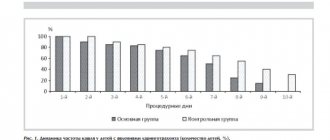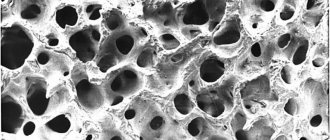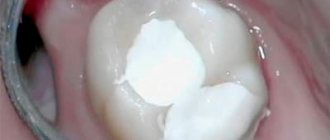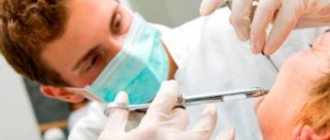Calcium gluconate: what is it and what is it for?
This drug is a dietary supplement that compensates for the lack of calcium in the body. This macronutrient performs a number of important functions:
- promotes the transmission of nerve impulses;
- ensures normal muscle function, and, in particular, the heart muscle;
- part of bones and teeth;
- participates in the process of blood clotting.
Calcium deficiency in the body can lead to a condition such as tetany.
In addition, due to the effect of calcium, such as reducing the permeability of the vascular wall, this drug has an anti-inflammatory and antiallergic effect.
Features of toothpastes with calcium
The basis of bones and hard tooth tissues consists of calcium. He is responsible for their strength. During nutrition, an acidic environment is created in the oral cavity, which destroys calcium compounds. If the substance does not enter the body in the required quantity, over time, foci of demineralization appear, tooth enamel becomes thin and sensitive, and as a result, caries appears. Without proper care, hard tissues become fragile. Under mechanical loads, pieces may break off from them.
To avoid negative manifestations, use specialized personal hygiene products. They replenish the mineral composition of the enamel, eliminate hypersensitivity and protect the surface from caries. When used in a timely manner, drugs not only have a preventive effect, but also treat diseases in the initial stages.
Toothpaste with calcium helps restore and reduce enamel sensitivity.
Who is calcium paste recommended for?
Calcium-based medicinal paste is indicated for use if a person has:
- poor enamel resistance to acids;
- manifestations of dental demineralization;
- increased sensitivity of teeth;
- minor manifestations of caries;
- fragility of teeth, tendency to chip;
- plaque.
How to choose the right pasta for an adult
When choosing, it is important that the paste contains calcium compounds that can be easily absorbed. Substances such as gluconate, carbonate or calcium fluoride are not well tolerated by our body, and therefore it is better to avoid products that contain these substances. In a good product, this mineral is usually present in the form of the following chemical compounds:
- glycerophosphate;
- pantothenate;
- synthetic hydroxyapatite;
- citrate;
- lactate
It is very important to monitor the composition of such medicinal products. It is undesirable to use a product whose components are both calcium and fluoride. Individually, these substances are extremely beneficial for teeth and the body as a whole, but when they are combined, an insoluble salt is formed. When brushing with such a paste, active particles of neither element will enter the teeth, that is, no therapeutic effect will follow from such a procedure.
You should also pay attention to the presence of auxiliary components. A good paste should contain xylitol or similar enzyme substances. You should not purchase a teeth cleaning product if its components include parabens, sodium lauryl sulfate, or aluminum oxide. These substances are harmful and can provoke metabolic disorders in the body.
Recommendations for use
In order for the teeth cleaning product to bring as much benefit as possible, you need to adhere to a number of rules:
- You should first clean the spaces between your teeth using dental floss.
- You should brush your mouth for at least 3 minutes.
- If possible, immediately after brushing, rinse your mouth with a mouthwash containing sodium fluoride or aminofluoride. The rinse aid will help ensure that the calcium that gets into the enamel is securely attached to it.
When is the drug prescribed?
Experts recommend using this drug for:
- osteoporosis;
- rickets and osteomalacia - conditions in which vitamin D metabolism is impaired;
- increased levels of phosphates in the blood in patients with renal failure;
- presence of high calcium needs: during pregnancy and lactation;
- poor diet;
- bone fractures;
- postmenopausal calcium deficiency;
- chronic diarrhea.
In addition, the drug as a component of complex therapy is used in dermatovenerology for the treatment of itchy dermatoses, urticaria, and angioedema. It is also used for the treatment of bleeding of various etiologies and nutritional dystrophy.
What is remotherapy and when is it needed?
When the enamel loses its strength and is unable to overcome the fight against microbes with dignity, dentists advise strengthening the enamel layer with calcium, fluorine, potassium, phosphorus, etc. This manipulation is called remineralization of teeth. Remotherapy in Stokos dentistry is prescribed when:
- caries was diagnosed at the spot stage;
- the child has overly sensitive teeth;
- fluorosis has been determined (the procedure will help improve the appearance of the elements);
- the patient's braces are removed (remotherapy will help the teeth recover);
- The child's oral microflora is disturbed and his teeth have darkened.
The same method of therapy is justified as part of the prevention of carious formations on elements.
What does a calcium gluconate injection do?
Calcium gluconate injections are best known as an adjuvant treatment for allergic diseases. However, they are also used to treat pathology of the parathyroid gland, in which there is an increased excretion of calcium from the body.
In addition, injections are also prescribed for conditions such as:
- eclampsia;
- nephritis;
- hyperkalemia;
- liver intoxication.
Injections of calcium gluconate help reduce the intensity of itching in atopic dermatitis, psoriasis and eczematous rashes.
Preparations for remineralization of teeth
The classic dental gel, which is used in remotherapy, contains two basic components - xylitol and calcium glycerophosphate. The first inhibits pathogenic bacteria that stimulate the development of caries. The second forms an invisible film on the surface of the elements, which prevents the leaching of calcium.
The world leader among remineralization preparations is R.O.K.S. gel. Medical Minerals without fluoride. The drug is used in two ways: the composition is applied to the teeth using a toothbrush (applicator) or the gel is placed in mouth guards, which are worn on the teeth for up to half an hour.
Other products for strengthening enamel include products Blend-a-med, Fluocal, Fluodent, Global White (for sensitive teeth).
Using the drug for allergies
If allergic reactions occur, calcium gluconate is a safe and effective remedy, the use of which practically cannot lead to an overdose. When the drug enters the body, the permeability of the vascular wall decreases and the allergen practically does not penetrate into the bloodstream. Thus, the development of an allergic reaction is inhibited. Calcium gluconate can be taken for preventive purposes.
The duration of the course depends on the characteristics of the disease. Calcium gluconate is prescribed by specialists together with antihistamines.
Dental remotherapy: what is included in the procedure
The main share of the cost of therapy falls on the production of individual mouth guards, which are filled with a therapeutic composition. The child will have to use such products at home - wear them for 20-30 minutes a day. The gel will penetrate the dental tissue and strengthen it. Course duration is 2-4 weeks.
An alternative option is to remineralize tooth enamel in the dentist’s office. In this case, the procedure includes:
- mechanical cleaning of the tooth surface using a special paste;
- treating the elements with a 0.5-1% solution of hydrogen peroxide, drying the enamel;
- applying tampons soaked in a 10% calcium gluconate solution to the enamel layer (they are changed at intervals of 5 minutes);
- carrying out an application with a 2-4% sodium fluoride solution (duration – up to 5 minutes).
The course consists of 15-20 applications, which are repeated every day or every other day. Upon completion of the last procedure, the doctor coats the dried enamel with fluoride-containing varnish. The last option of remotherapy is suitable for older children.
How to give calcium gluconate to children
The drug can be given to children from the first year of life if indicated. At the age of up to 12 months, the optimal daily dose is 3 tablets. Children 1-4 years old are recommended to take 6 tablets per day. Children under 9 years of age can take from 6 to 12 tablets per day, depending on the doctor’s recommendations. Adolescents under 14 years of age can take 12-18 tablets per day.
The daily dose of the drug is divided into 2-4 doses.
Calcium gluconate in the form of a solution is used to treat children of any age as an emergency treatment for severe allergic reactions and the development of bleeding.
Solutions
Remineralizing solutions are preparations containing macro- and microelements necessary for the mineralization process. The mineralizing components included in solutions for local caries prevention are represented by compounds of fluorine, calcium, phosphorus and other trace elements. Such solutions can be used in the form of rinses and mouth baths by the patient himself at home or in children's organized groups (fluoride-containing mouth rinses are presented above). However, their use in the form of applications, electrophoresis and phonophoresis on the surface of teeth is more effective. A significant number of formulations of remineralizing solutions have been proposed. Without going into detail about their review, we will present the most widely used at present. Fluorine-containing solutions for applications, electrophoresis and phonophoresis, as a rule, contain fluorine compounds such as sodium fluoride (0.2%, 1-2%), tin fluoride (8-10%), sodium monofluorophosphate, potassium fluoride, amino fluorides. Calcium preparations for applications and electrophoresis include calcium gluconate (10% solution), calcium glycerophosphate (2.5%), and calcium chloride (10%). Preparations containing phosphorus are represented by sodium monofluorophosphate and sodium salt of hexaphosphoric acid. Calcium ions and phosphate ions should be added to the composition of remineralizing solutions in such a concentration that saliva is a supersaturated solution. The optimal ratio of calcium and phosphate in solution is 1:1.6 or higher. Complex remineralizing solutions include Remodent and Profocar. The drug Remodent was developed at the Riga Medical Institute in 1975 by G. N. Pakhomov, E. V. Borovsky, A. Ya. Luste and is currently registered in 11 countries around the world. Remodent powder is highly purified bone meal from the jaw bones of young cattle, obtained by lyophilization or vacuum drying. Remodent composition: calcium - 4.35%, phosphorus - 1.36%, magnesium - 0.15%, potassium - 0. 20%, sodium - 16.0%, chlorine - 30.0%, organic substances - 44.0%, manganese, iron, zinc, copper and other trace elements - up to 100%. The drug is available in the form of powder, tablets and granules, is included in tooth powders, pastes, gels, solutions. A 3% solution of Remodent powder is used for applications and mouth rinses (15-25 ml of solution per rinse) 1-2 times a week for 10 months a year. Profokar is a multicomponent remineralizing agent with optimal content and ratio of the basic chemical elements necessary for constructing the crystal lattice of enamel apatites. Contains calcium, phosphorus, fluorine, magnesium, iron, zinc, potassium, sodium, chlorine, copper, lead. The material for its production is demineralized bovine tubular bones. Unlike Remodent, it contains fluoride. It is a clear liquid with a barely noticeable whitish sediment and a salty taste. Can be used for mouth rinses and applications.
For whom the drug is contraindicated
The drug is not used in patients with:
- intolerance to any of the components;
- increased calcium levels in the blood;
- tendency to form blood clots;
- sarcoidosis;
- severe atherosclerosis;
- urolithiasis with the formation of calcium stones.
Calcium gluconate is also not prescribed to patients taking cardiac glycosides.
Calcium gluconate
The drug is warmed to body temperature before administration. The drug is administered deeply intramuscularly or intravenously slowly (over 2-3 minutes), or by drip, to eliminate the possibility of local irritation or necrosis if the drug gets into perivascular tissue.
Intravenous injections should be carried out under close monitoring of heart rate and ECG, since bradycardia with vasodilation or arrhythmias may occur if calcium gluconate is administered too quickly.
With intravenous administration, a feeling of heat throughout the body is possible, which quickly passes. Due to the risk of local irritation, intramuscular injections should only be performed if intravenous injection is not possible. Intramuscular injections must be performed deep enough into the muscle, preferably in the gluteal region. For obese patients, a longer needle should be selected to ensure safe insertion into muscle rather than fat tissue. If repeated injections are necessary, the injection site should be changed each time.
During treatment, it is necessary to carefully monitor the concentration of calcium in the blood plasma; when administered in high doses, additionally monitor the rate of calcium excretion in the urine.
When intravenously administered calcium gluconate, in exceptional cases, patients receiving cardiac glycosides require monitoring of cardiac activity and conditions must be provided for emergency treatment of cardiac complications (such as severe arrhythmias).
Calcium salts should be used with caution and only after carefully determining the indications in patients with nephrocalcinosis, pathology of the cardiovascular system, sarcoidosis (Beck's disease), in patients receiving epinephrine, in elderly patients.
Renal dysfunction may be associated with hypercalcemia and secondary hyperparathyroidism. Therefore, in patients with impaired renal function, parenteral calcium should be prescribed only after carefully determining the indications, and the calcium-phosphate balance must be monitored.
When used simultaneously with other drugs, medical supervision is required.
Use the solution only if it is transparent and the ampoule is not damaged. The drug should be diluted immediately after opening the ampoule. When diluting the drug, strict adherence to aseptic rules is required. From a microbiological safety point of view, the diluted drug should be used immediately. The ampoule is for single use only. The exception is dilutions prepared under controlled and aseptic conditions. After preparing the solution, the terms and conditions of its storage before administration are the responsibility of the user and should be no more than 24 hours at a temperature of 2 to 8 ° C. The remaining unused volumes of the drug must be destroyed.
Overdose symptoms
With prolonged use of the drug, accumulation of calcium salts in the body is possible. In case of overdose, the following manifestations are observed:
- dyspeptic disorders: constipation, nausea and vomiting;
- increased fatigue and irritability;
- abdominal pain;
- constant thirst;
- muscle weakness and decreased blood pressure.
If these symptoms appear, you must stop taking the drug. Particularly severe cases may require intravenous calcitonin.
Dental care after remotherapy
After therapy, the doctors of our dental clinic advise parents to continue the natural remineralization of enamel at home, namely:
- give the child vitamins, calcium-containing products to strengthen the enamel layer, vitamin D, fish oil;
- regularly brush your child’s teeth using special children’s toothpastes;
- rinse the baby’s mouth with pharmaceutical compounds;
- enrich the child’s diet with dairy products, meat, fish;
- limit intake of sweets and sour foods.
What symptoms indicate the need for remineralization?
An early manifestation of demineralization is a focal lesion of the enamel layer, which is most often diagnosed in children under 11 years of age. Light spots appear on the surface of children's teeth (or at their junctions). The formations may be barely noticeable and cover the entire element. Among the secondary signs of weakening enamel:
- decreased dental shine;
- dullness of elements;
- porosity, surface roughness of elements;
- darkening of white spots - color change to brown.
The demineralization process cannot be stopped without taking proper measures. When primary signs of destruction of the surface layer appear, the child should be shown to the dentist.
Usage rate
Throughout a person’s life, the required amount of calcium changes:
- Infants under 6 months need 200 mg daily.
- Children from 7 months to one year need 260 mg per day.
- Between the ages of one and three years, a child needs 700 mg.
- Children from 4 to 8 years old need 1000 mg of the macronutrient daily.
- A maximum dose of 1300 mg/day is needed for ages 9-18 years.
- Women aged 19 to 50 years need 1000 mg of calcium per day.
- Men aged 19 to 70 years need 1000 mg per day.
- Women aged 51 years and older need 1200 mg daily.
- Men 71 years of age and older require 1,200 mg of calcium per day.
The greatest amount of calcium is needed by a person in childhood and adolescence, when permanent teeth appear. This is due to the fact that the macroelement accumulates in the teeth only during their formation. And the further condition of the teeth depends on how much this supply is replenished. Unfortunately, it will not be possible to influence the health of molars by consuming calcium-containing foods.







